Setting up your first freshwater aquarium can be a daunting task, especially when it comes to choosing the right tropical fish. Many beginner-friendly ornamental and exotic freshwater fish species are available, including tetras, swordtails, vibrant bettas, mollies, and goldfish. However, it is crucial to ensure compatibility among the fish you select.
Most people opt for heated freshwater aquariums, which can accommodate a wide variety of colorful fish species. But as a beginner, it’s essential to understand that you cannot simply pick the most visually appealing fish and expect them to coexist harmoniously. Fish species, like people, have different temperaments, and some are more solitary by nature.
Durable ornamental fish types can withstand various conditions, and many are well-suited for community tanks, contributing to different roles within the ecosystem. In this guide, you’ll discover some of the top freshwater aquarium fish for beginners, featuring some of the most fascinating species to get you started. While this list may not be exhaustive, it provides a solid foundation for your aquatic journey.
Best Freshwater Aquarium Fish for Beginners (Easy Fish to Keep Alive) With Images
Observing tropical fish glide gracefully in an aquarium is truly a captivating sight. With proper setup and care, your heated aquarium can become a vibrant haven for diverse, large, and colorful exotic fish. Let’s delve into some of the most beginner-friendly freshwater fish species that you can consider for your tank.
Guppies
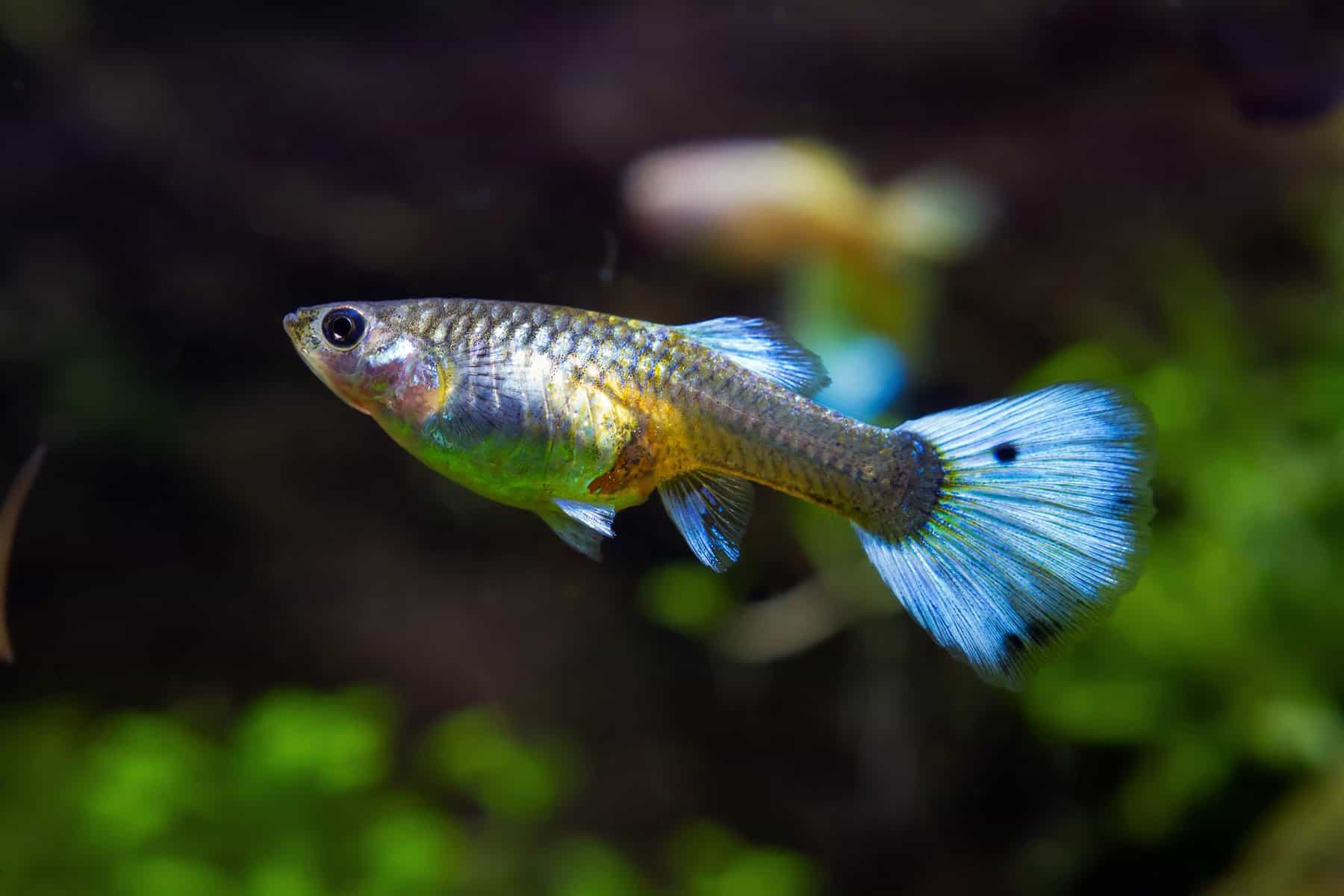
Guppies (Poecilia reticulata) are highly favored as freshwater aquarium fish due to their small size, striking beauty, and easy maintenance. Known for their peaceful nature, guppies seldom cause disturbances with other fish species, making them ideal for community tanks. It’s advisable to start with at least three guppies, as they thrive in social settings.
Guppies are available in a spectrum of colors ranging from deep reds and pinks to yellows and even iridescent metallic hues. Their bodies can exhibit a variety of colors and patterns, which can be either uniform or multicolored.
In addition to their vibrant colorations, the diverse shapes of their fins and tails further enhance their appeal. Some guppies boast vibrant fan-like tails, while others exhibit sword-like pointed tails. These hardy and adaptable fish consume a diet consisting of fish flakes, shrimp, and blood worms.
As small tropical fish, guppies grow up to a maximum length of 2 inches (5 cm). In a 30-gallon (136 liters) freshwater aquarium, you can comfortably house around 15 to 17 guppies or other compatible community fish.
Neon Tetra
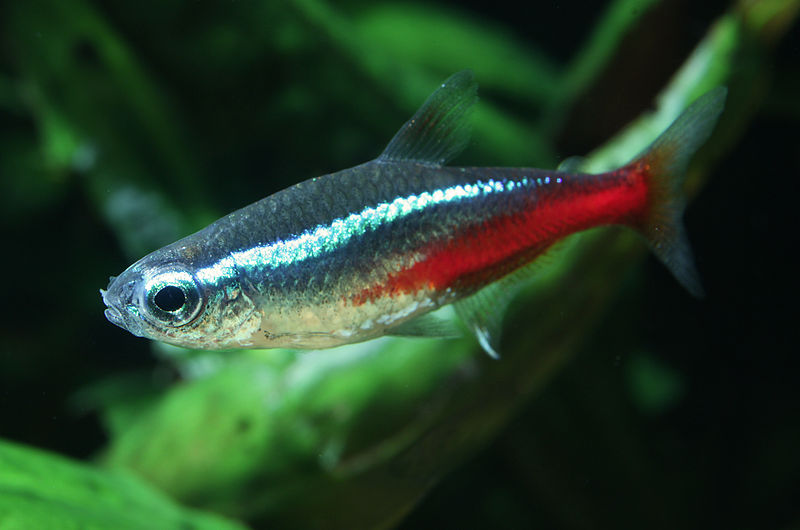
Tetras are among the most beginner-friendly aquarium fish and they add a splash of color to any tank. Notably, the neon tetra stands out due to its vibrant, iridescent blue or green neon stripe that runs along its side, earning it its name. This eye-catching, low-maintenance fish thrives in both cool and warm water aquariums, provided the temperature is regulated.
Like guppies, tetras, including neon tetras, are shy and peaceful creatures. They prefer to swim in close-knit shoals and maintain a serene demeanor. Their small size allows for the addition of multiple tetras to your aquarium. They gel well with other peaceful community fish such as guppies, barbs, danios, and different tetra species.
However, due to their shy disposition, it’s recommended to keep them away from more aggressive fish. If you decide to start with tetras, ensure your tank includes several freshwater plants to replicate their natural habitat and offer them some shelter.
Tetras primarily feed on flaked fish meal and tiny brine shrimp. These affordable aquatic pets grow up to a size of 1.3″ (3.5 cm) from head to tail.
Danios (Zebrafish)
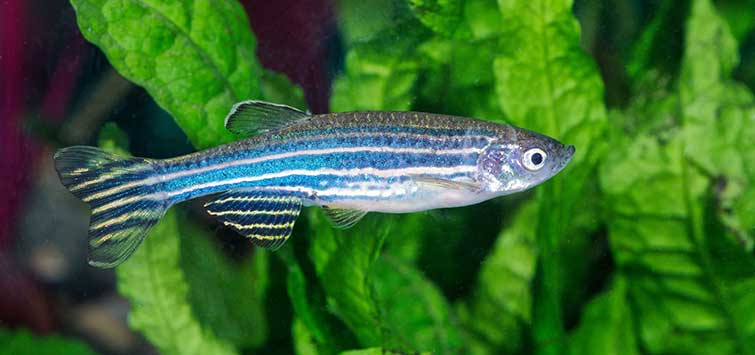
Zebrafish, also known as zebra danios, are a favorite choice in pet stores due to their affordability and low maintenance needs. These tropical fish are highly resilient, making them a perfect choice for those new to aquarium-keeping. They are among the least expensive small freshwater fish available, making them an excellent starting point for your first aquarium.
As implied by their name, zebrafish sport striped patterns on their sides. These vibrant stripes give these aquatic pets a captivating look as they swim around the tank. Their playful nature makes them a favorite among seasoned aquarists, especially in community tanks.
Like other social species such as guppies and tetras, zebrafish prefer to be in the company of a small group of fish in their tank. The typical size of a zebrafish ranges between 1.6 and 2 inches (4 and 5 cm).
Mollies
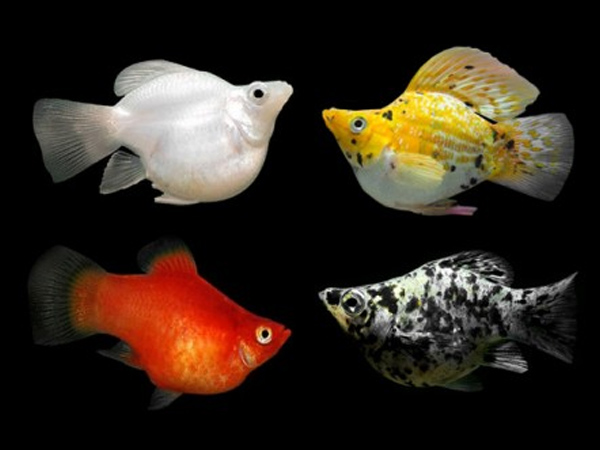
Mollies, a species of tropical fish available in a variety of colors, are an ideal choice for those new to fish care. These resilient fish are peaceful and cohabit well with other species within the tank. With numerous varieties of mollies to choose from, you have the freedom to select one that best fits your tropical tank.
The black molly is one of the most favored varieties of freshwater mollies. Just as easy to care for as guppies, they sport a glossy black hue on their fins, body, and tail. The dalmatian molly, reminiscent of the canine breed, boasts black and white spots. You can also find mollies in solid shades of red, orange, or yellow, as well as multicolored ones. Mollies are among the easiest fish to keep alive, especially for those setting up their first aquarium.
Mollies are adaptable and can withstand variations in water conditions, making them a valuable addition to your perfect freshwater aquarium setup. Females may slightly outsize males, with these low-maintenance aquarium fish reaching approximately 3″ (7 cm) in length.
Goldfish
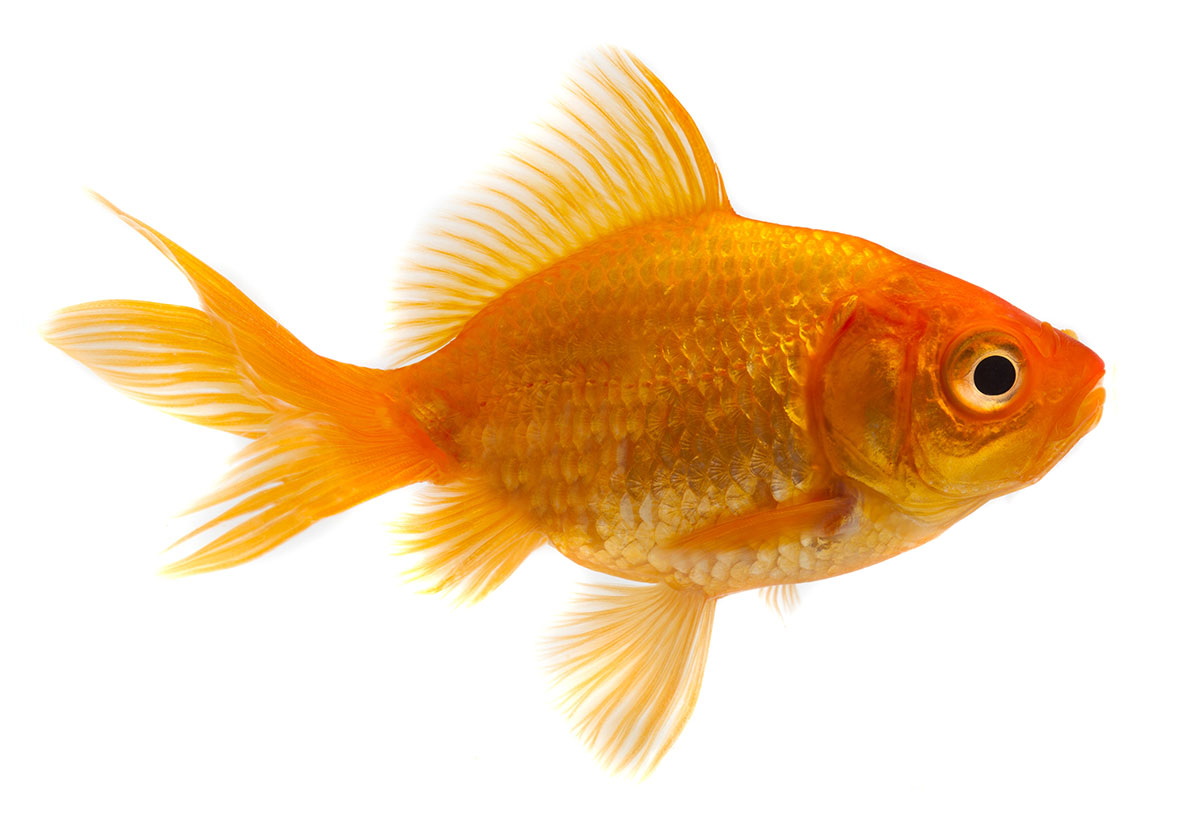
Goldfish are an ideal choice for novice aquarium enthusiasts who don’t have a heated tank. While some species can survive in a range of temperatures, goldfish thrive in cooler waters, specifically between 62-74 F (17-23 C).
Goldfish exhibit a remarkable diversity in color, size, and shape. They can be found in hues of orange, red, yellow, white, black, or a combination of these. Some unique breeds boast elegant long tails and other distinctive features that can enhance the aesthetics of your aquarium.
However, it’s a common misconception to house goldfish in a small tank. Due to the significant waste output of goldfish, water quality can be negatively impacted. Consequently, it’s advisable to keep goldfish in a larger tank and perform weekly water changes.
Platies
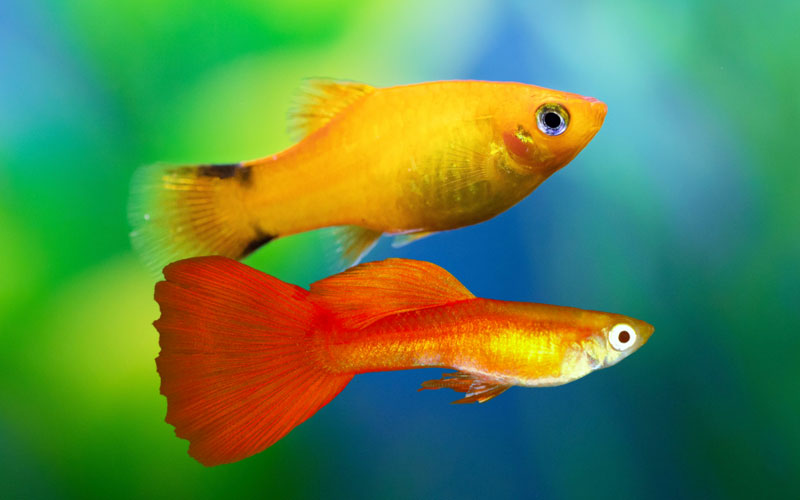
Platyfish are among the simplest tropical fish to keep and are available in a spectrum of colors. Much like other species, there are various breeds of this distinctive freshwater fish. Platies, with their vast array of colors and peaceful co-existence with other fish, are a popular choice for beginner aquarium enthusiasts.
Some platyfish bred for aquariums feature vibrant colors with contrasting dark dorsal and tail fins. Other variants display metallic blues and greens that seem to radiate. Multicolored platyfish come in a variety of eye-catching dual-tone shades. Compared to mollies, platies have a shorter, rounder body, whereas the body of red mollies is elongated.
These docile pets coexist harmoniously with guppies, tetras, and other community fish. Platies can grow up to around 2″ (5 cm) when fully grown.
Swordtails
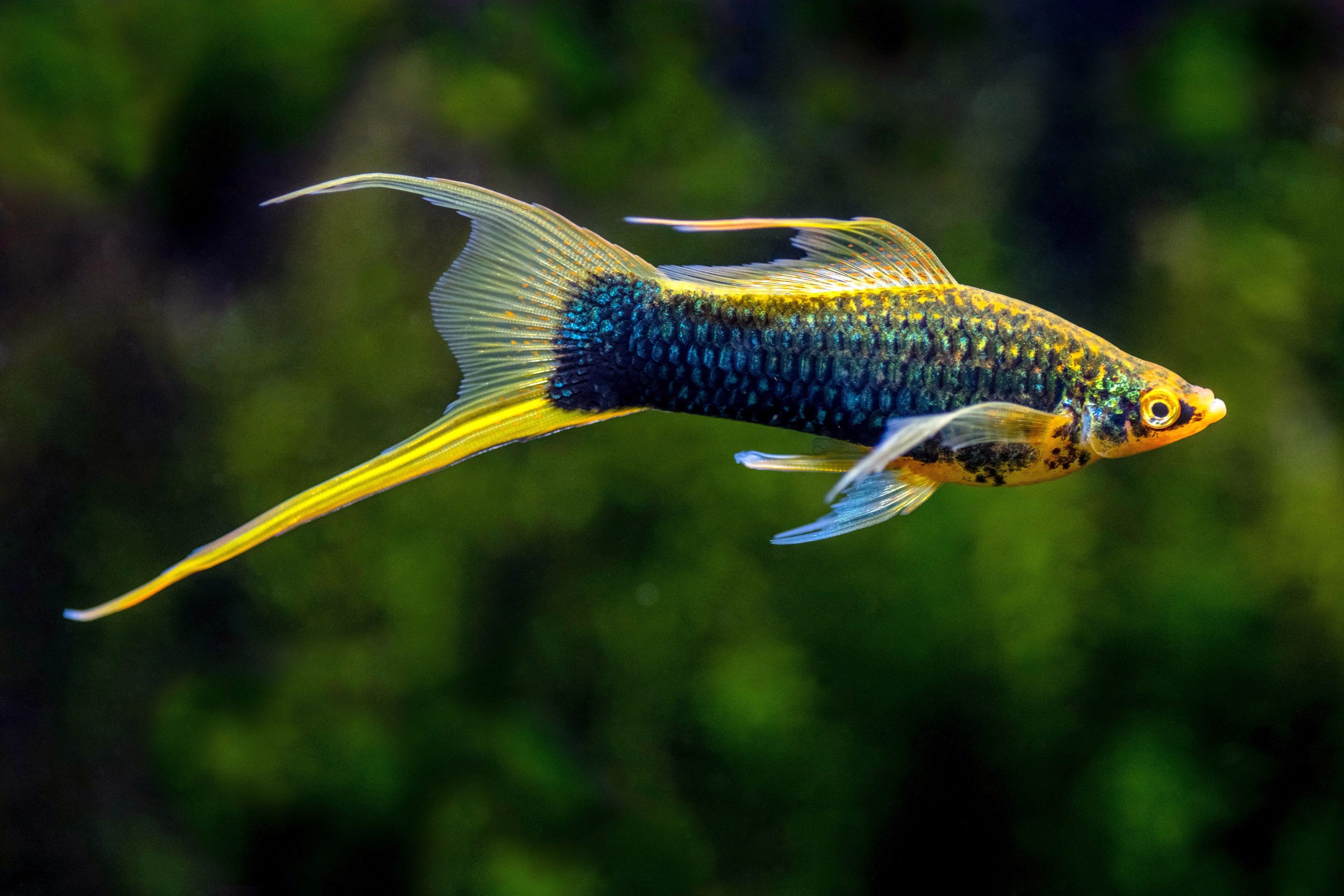
Swordtails, a type of tropical fish, are known for their ease of care and distinctive long tails. These freshwater tropical fish are closely related to platies and have been bred to have a unique sword-like tail fin. They are adaptable to various water conditions, making them suitable for different tank setups.
In a community tank, swordtails can coexist with other fish. They generally exhibit non-aggressive behavior and thrive when kept in groups of five or more. However, it’s important to note that if there are multiple male swordtails in the tank, aggression may arise. Therefore, it’s advisable to consider this when arranging your aquarium.
If your heated aquarium is abundant with plants, swordtails make an excellent choice as they typically feed on vegetation. However, occasional live food can also be provided to them. Male swordtails can grow up to 5 inches (12 cm) in length due to their elongated lower fin.
Cherry Barb
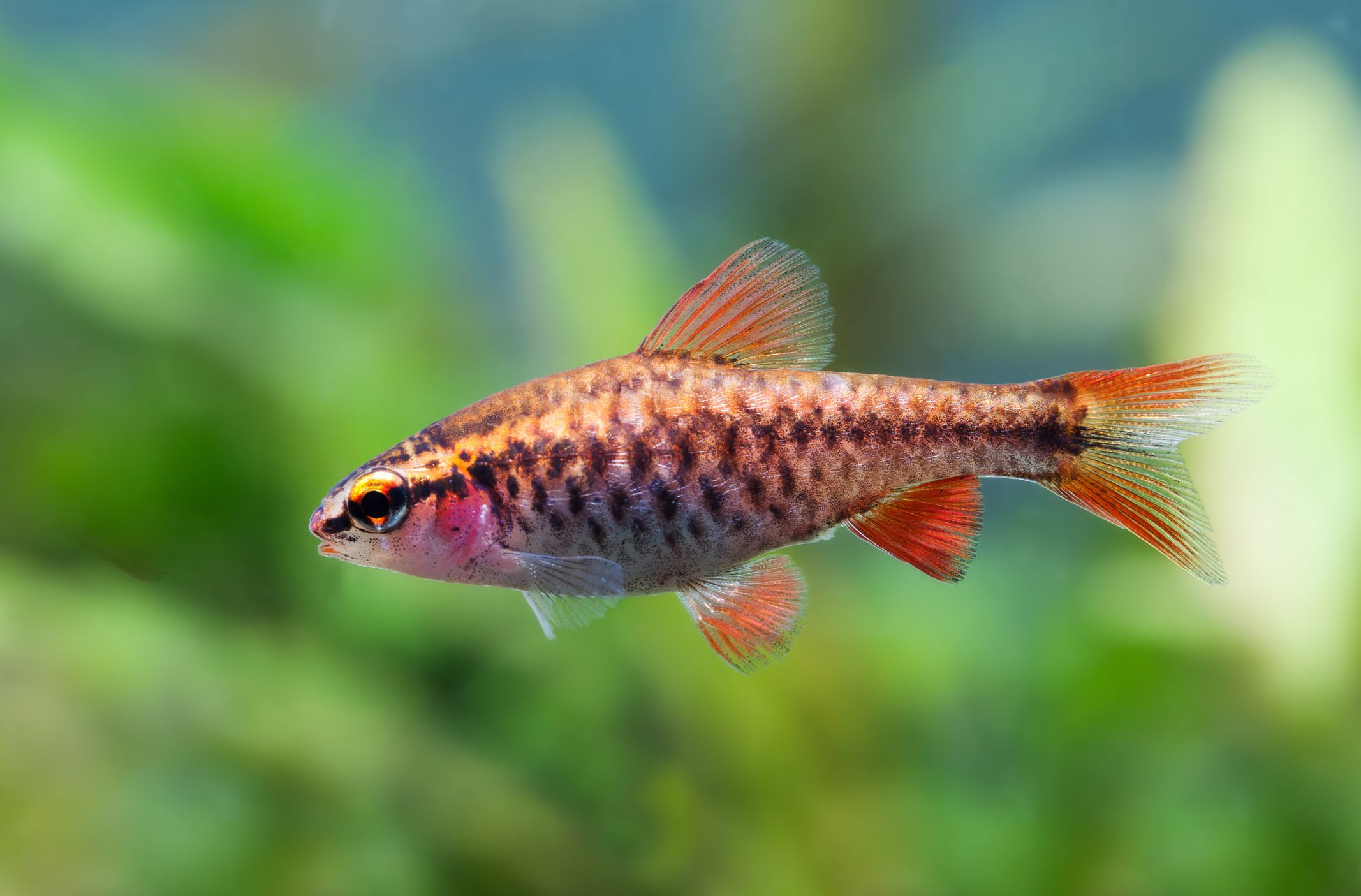
Cherry barbs can be a challenging species of tropical fish to care for, but they can still be suitable for novice aquarists. Among the Barbinae family, the cherry barbs are the most sociable, with distinct appearances for males and females. Females exhibit a light tan color with a dark stripe along their sides. The male cherry barbs, on the other hand, sport a unique cherry red coloration during the spawning period.
When setting up a tank for cherry barbs, it is important to provide plenty of live plants for them to seek shelter in. Despite their active nature, these fish tend to prefer being solitary rather than mingling with other fish in the aquarium. However, if the tank conditions are suitable, cherry barbs can thrive in a community tank.
These attractive fish typically grow to around 2 inches (5 cm) in length and have a slightly slimmer appearance compared to females.
Pearl Gourami
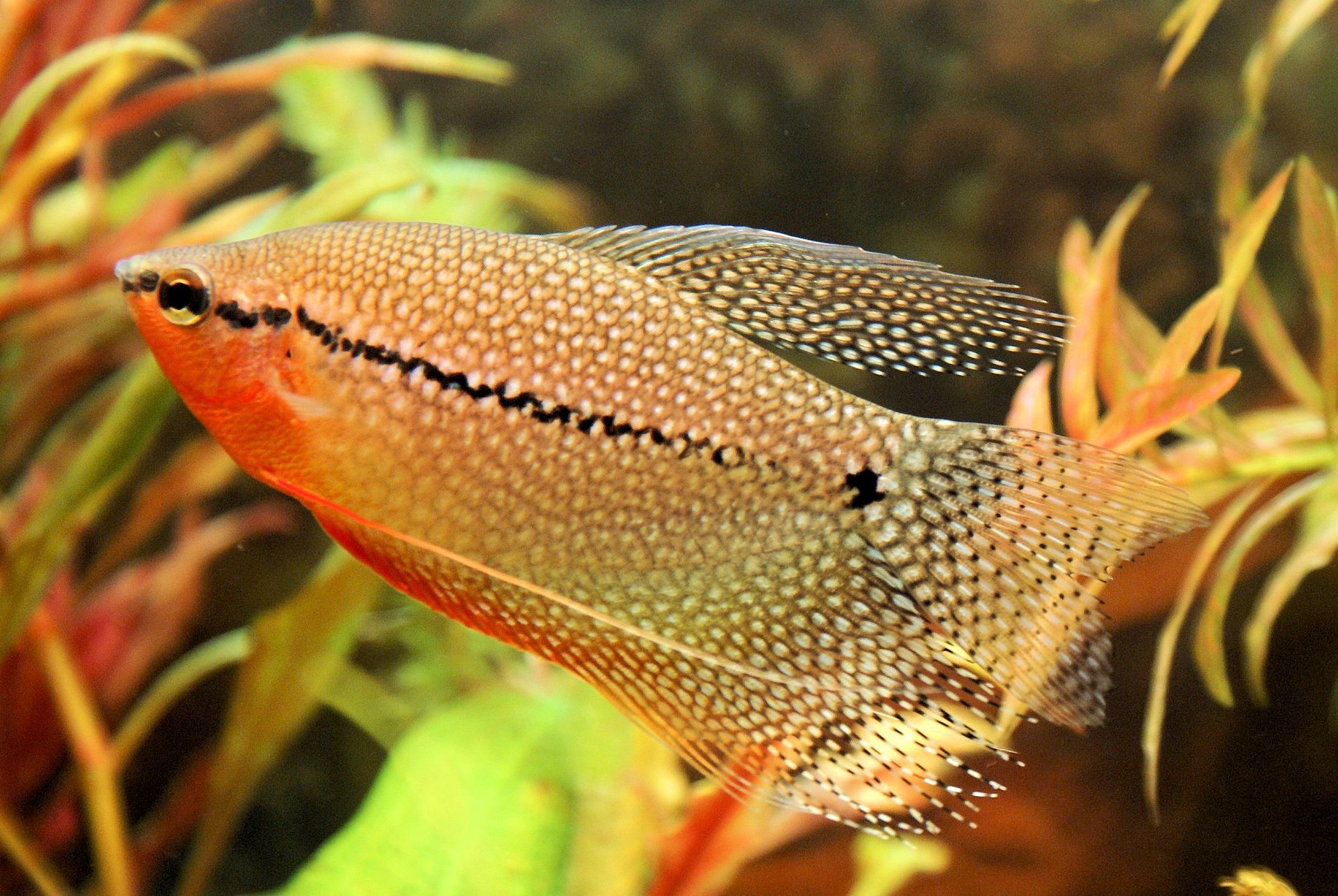
The pearl gourami is an exceptionally friendly and low-maintenance fish that peacefully coexists with other species. These charming and serene fish gracefully swim around fish tanks without causing any trouble to their tankmates. With their long trailing ventral fins resembling delicate feelers, they possess a distinctive appearance that adds to the beauty of tropical aquariums. The pearl gourami stands out as a larger tropical fish due to its rounded body and elegant demeanor. The name “pearl gourami” originates from the pearl-like patterns adorning its body and fins.
Given their timid nature and leisurely movements, gourami fish are not well-suited to aggressive tankmates. They thrive in a community tank environment alongside species such as guppies, tetras, and swordtails. When setting up a new fish tank for a pearl gourami, it is important to provide an ample amount of plants and decorations that serve as hiding spots when needed.
Considering their significant size, a minimum tank capacity of 30 gallons (136 liters) is necessary. Depending on the specific species, gouramis can grow up to 4 to 5 inches (10 cm) in length.
Neon Rainbowfish

Neon rainbowfish and dwarf rainbowfish are extraordinary freshwater tropical fish that thrive when swimming in groups. These large and tranquil fish have a peaceful nature and prefer the company of their own kind. As they mature, their skin color becomes more vibrant and striking. The radiant blue hue that adorns their bodies is what earns them the name rainbow fish.
These fish also exhibit tolerance towards tetras, guppies, and other small fish, although they may defend themselves if confronted by more aggressive species. Rainbow fish are relatively straightforward to breed as their eggs are scattered throughout the aquarium. Given their preference for swimming in shoals and their potential length of up to 6 inches (15 cm), providing a spacious fish tank is crucial for their well-being and flourishing.
Killifish
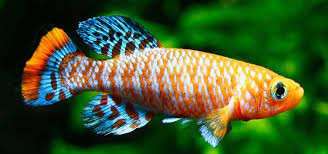
The world of killifish encompasses numerous fascinating species. Among them, the spotfin killifish, Guatemalan killifish, and striped killifish stand out as peaceful cohabitants. These petite, elongated fish exhibit vibrant colors and intricate spotted patterns on their bodies and fins. With approximately 1,270 diverse killifish types available, finding a compatible match for your new aquarium is highly likely.
Killifish thrive in shared tanks alongside tetras, guppies, and mollies. Their shimmering silver, crimson, orange, and neon-blue hues bring a delightful vibrancy to any aquarium setting. Some rare species boast striking vertical striped patterns and impressive ornate fins.
Certain species of killifish are known for their long and slender bodies adorned with black and white zebra-like stripes. Ranging in size from 1 to 2 inches (2.5 to 5 cm), killifish are suitable for beginner fishkeepers and provide an exciting addition to any aquatic collection.
Bettas
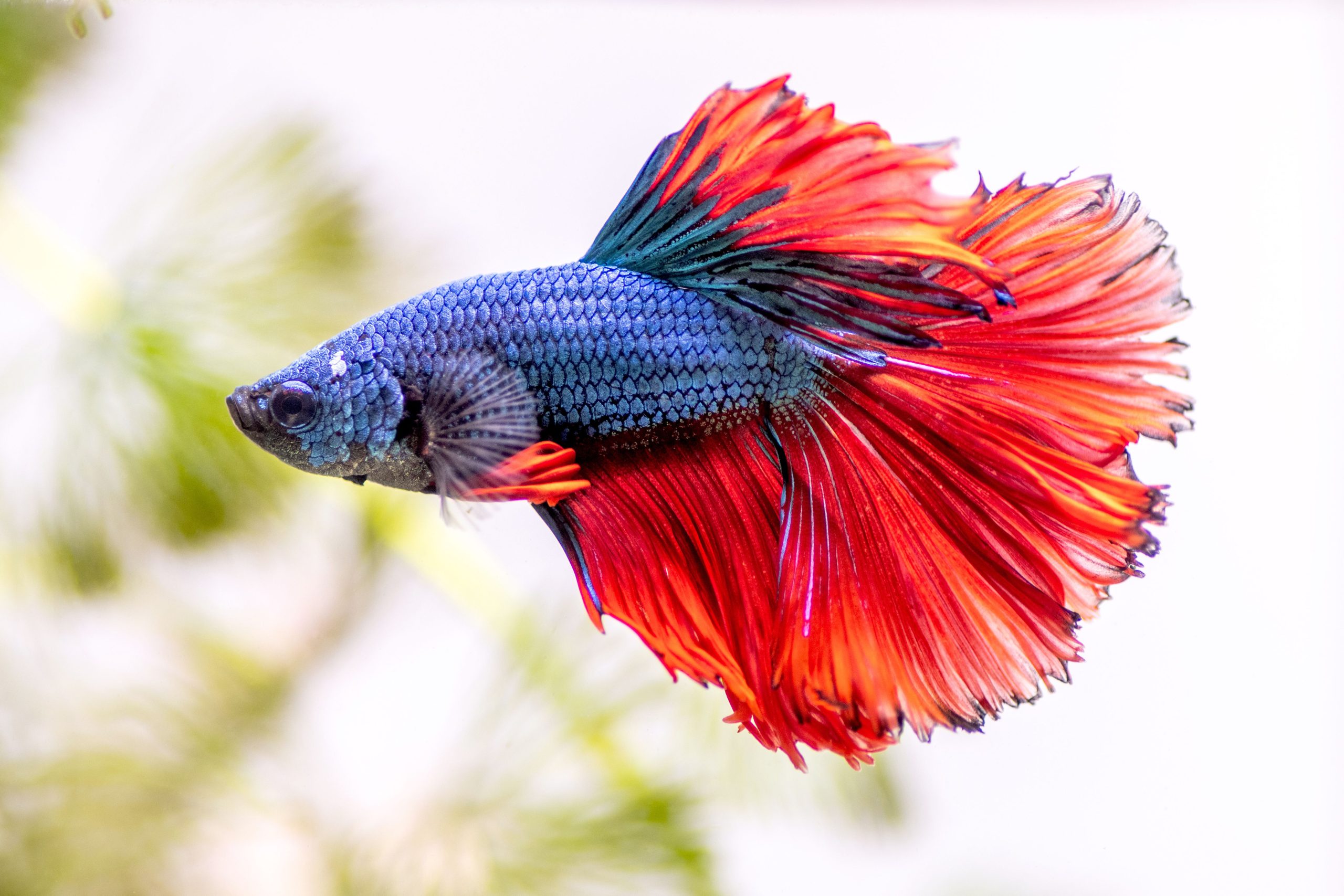
Bettas are truly magnificent tropical freshwater fish, boasting a wide array of colors. While they may not be recommended for novice aquarium owners, having a single betta in a tank should not lead to aggression. These vibrant fish generally exhibit peaceful behavior when kept alongside other non-aggressive tropical fish species.
Bettas possess large, flowing fins that are present in both males and females, but they develop into elaborate displays in the males. The species of these ornamental fish offer a diverse range of colors, including dark blue, dark red, vivid yellow, and iridescent blues and greens. Some betta species showcase captivating multicolored patterns, while others display a dominant hue.
In freshwater tanks, bettas can exhibit stunning and captivating color patterns, often ranking among the most beautiful inhabitants. Examples of these remarkable designs include marbling effects, Nemo-like patterns, bi-color combinations, and fins with contrasting colors. There is a wide variety of fin and tail variations within the most popular species of freshwater tropical fish.
For beginner aquarists, here’s a crucial tip: avoid keeping small fin-nipping fish with your betta. The smaller bettas, also known as Siamese fighting fish, may not fare well in such encounters as they become prime targets. These exquisite fish typically reach a length of around 2 inches (5 cm), adding grace and beauty to any aquarium.
Angelfish

For newcomers to the world of aquarium keeping seeking an exotic species, angelfish can be a splendid choice. However, it’s important to note that angelfish can display aggression, requiring careful attention to create and maintain an ideal environment for them in the fish tank.
When kept as the sole angelfish in the tank, they generally exhibit calm behavior and adaptability. However, aggression may arise, particularly when they are paired or grouped together. Therefore, for beginners interested in keeping angelfish, it is advisable to acquire them when they are young and provide them with ample space in a large tank.
As angelfish mature, they have the potential to become more territorial and challenging to manage. Nonetheless, if provided with sufficient space, they can embellish any aquarium with their graceful, elegant, and captivating presence.
Freshwater Aquarium Catfish (Corydoras)
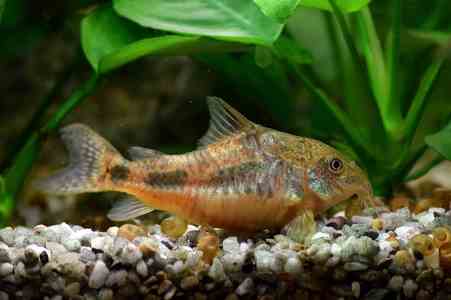
Consider adding a delightful species of tropical freshwater catfish, known as Corydoras, to your aquarium. These fascinating creatures inhabit the bottom of the tank and are remarkably easy to care for. Due to their non-aggressive nature and ability to peacefully coexist with other calm fish, Corydoras fish are highly recommended for beginner aquarists. These algae-sucking fish serve as efficient cleaners in the aquarium, thriving in the lower layers where they eagerly consume debris and other food particles.
When it comes to feeding, it is important to take into account the specific dietary needs of Corydoras if you lack experience in fish care. Using sinking pellets ensures that these bottom-dwelling fish receive their fair share of food. Otherwise, faster fish inhabiting the middle and top sections of the tank may consume all the flakes, leaving the Corydoras without adequate sustenance.
Kuhli Loach
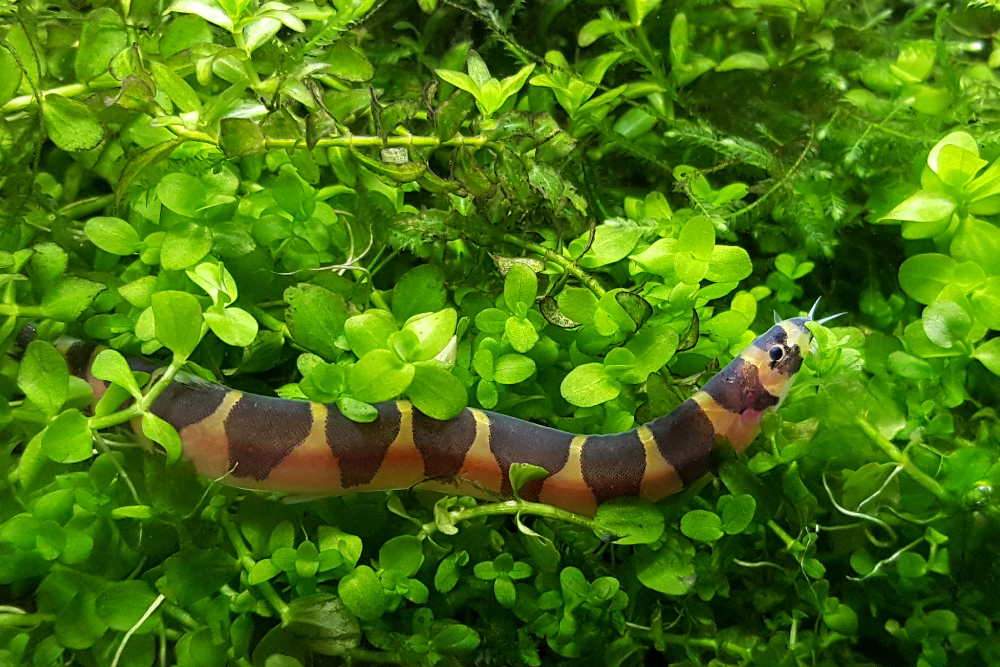
Introduce the kuhli loach, a peaceful tropical fish, to your aquarium’s bottom, adding a cool and distinctive touch to its appearance. With their elongated bodies resembling eels, these fascinating fish display bands of yellow stripes that wrap around them. They happily feed on the settled food at the bottom of your aquarium, effortlessly blending into their habitat.
One consideration when caring for kuhli loaches is their tendency to burrow beneath the gravel and remain hidden for extended periods, which can be a concern for beginners. However, these snake-like fish can bring excitement to the lower regions of your tropical aquarium setting. In larger aquariums, kuhli loaches can reach lengths of up to 3 inches (7.6 cm), enhancing the diversity and visual interest of your aquatic environment.
Tiger Pleco
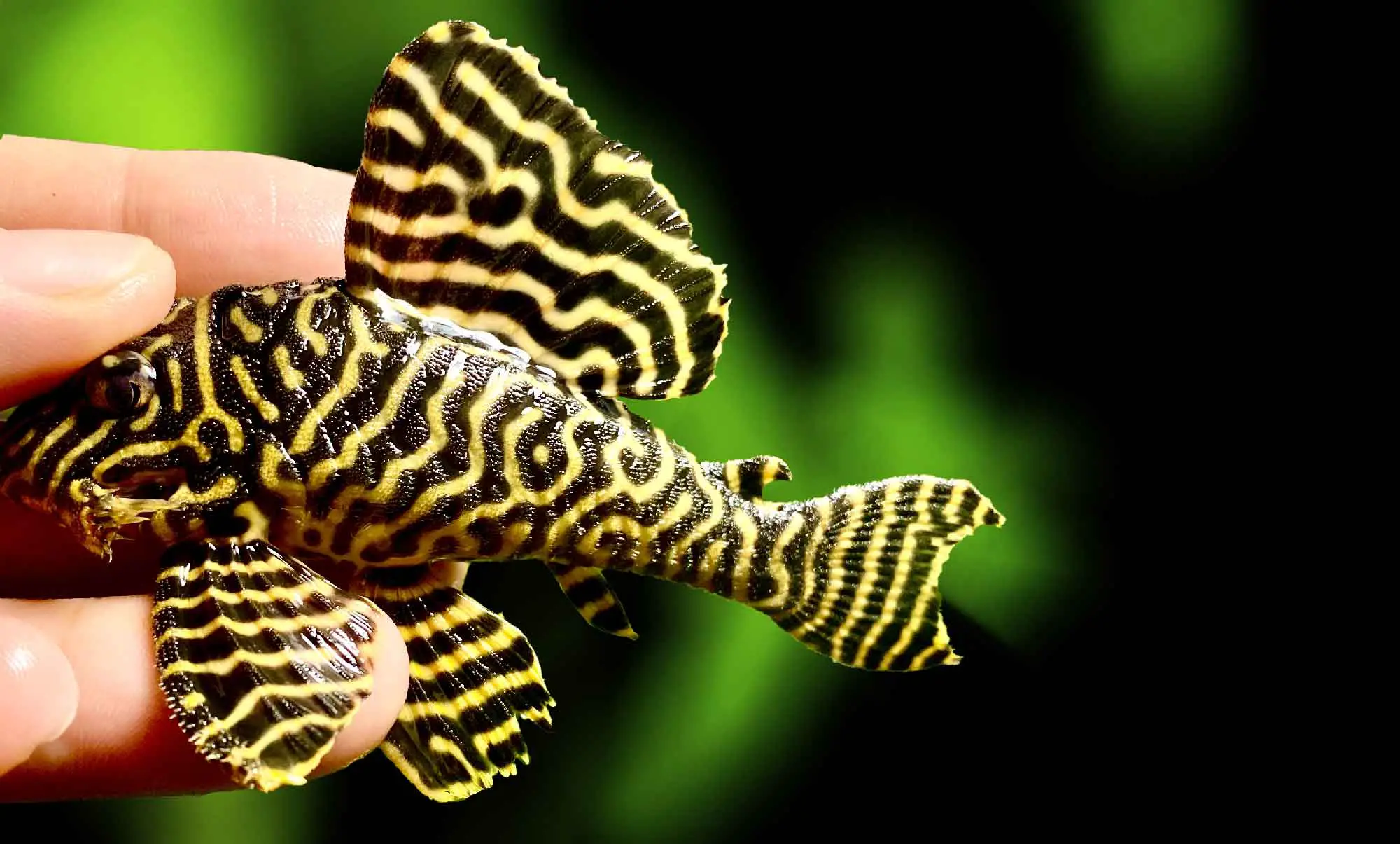
The tiger pleco is an excellent choice for novice aquarists looking to add a bottom-feeding fish to their freshwater tanks. As a type of aquarium catfish, this species primarily scavenges at the bottom of the tank, helping to keep the gravel free from algae and other food debris. Plecos, in general, are peaceful and low-maintenance, making them well-suited for first-time owners. However, it’s crucial to provide them with the appropriate environment to ensure their well-being.
If you’re considering adding a tiger pleco to your freshwater aquarium, be sure to provide ample ornaments or hiding places. This will offer them a sense of security and retreat. It’s also important to note that tiger plecos can exhibit territorial behavior and may become aggressive towards other plecos if multiple individuals of the species are present in the tank. Creating a harmonious and balanced environment is essential for the successful keeping of these fascinating fish.
